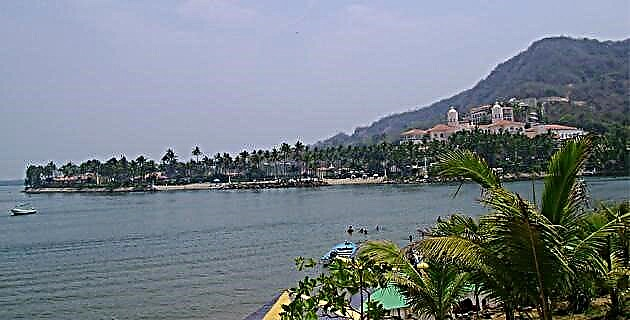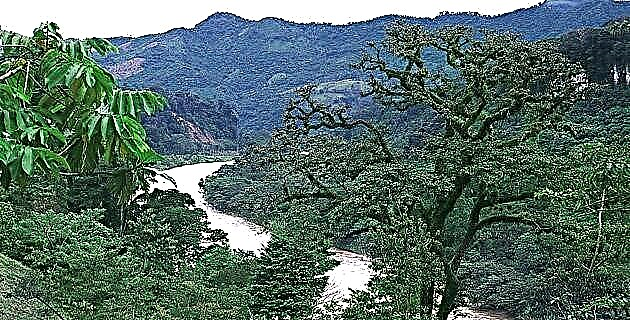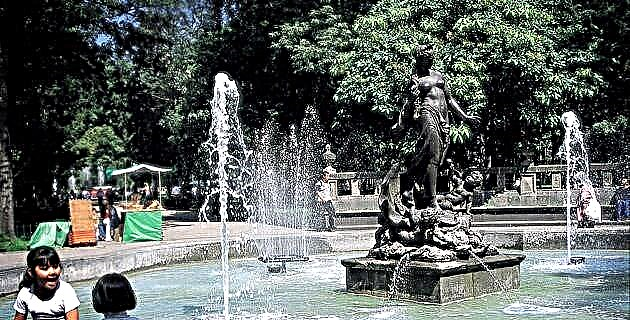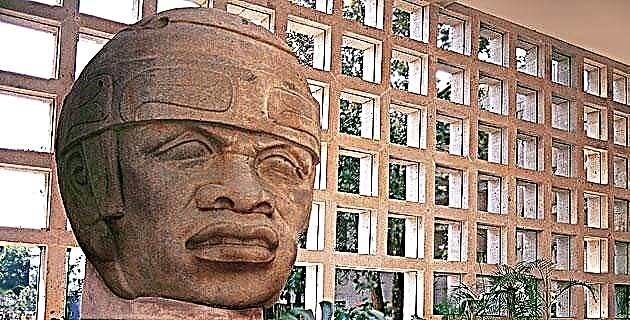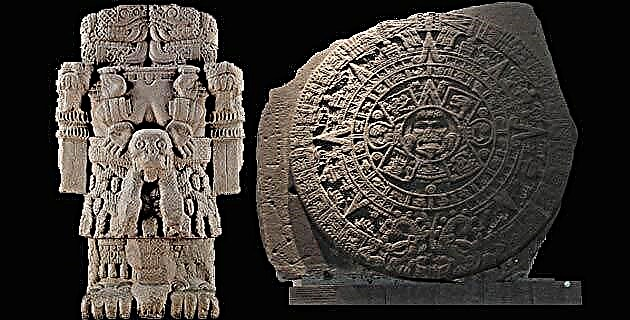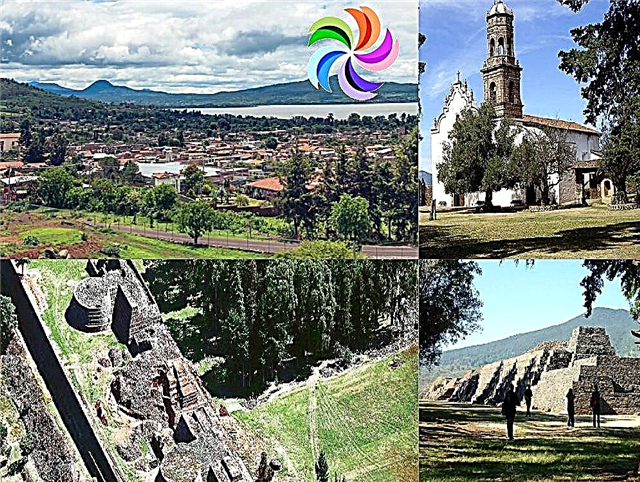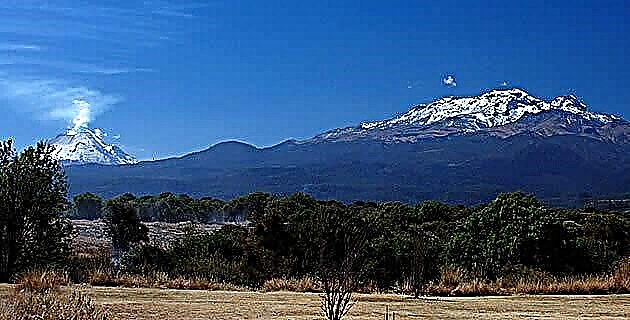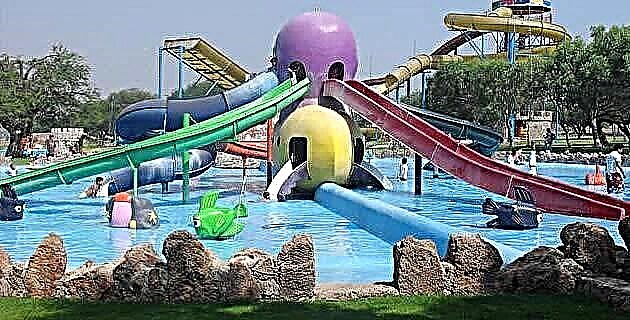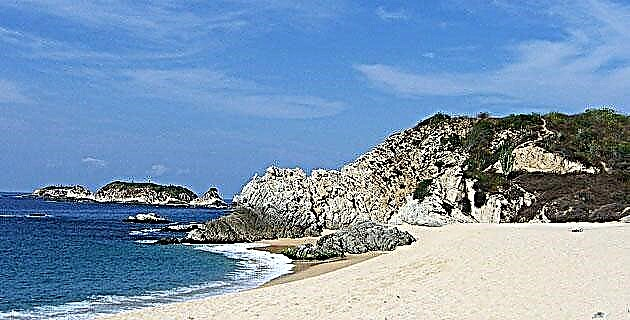
The wide and stylized bay of El Faro de Bucerías is topped by numerous crags, mountains and islets, which add their terrestrial beauty to the countless wonders of the ocean world.
In El Faro the sea, which varies from turquoise to dark blue, has a pleasant temperature most of the year, but not all areas are suitable for swimming. The extreme left (facing the sea) is preferred by bathers and snorkelers, as it has a gentle slope, calm waves and reefs inhabited by numerous species. The rest of the beach is recommended only for expert swimmers, due to its steep decline and strong ocean currents.
There are numerous arches where to set up tents and hang the essential hammock. In each bower there is a small restaurant where delicious dishes based on seafood and fish are prepared, and several have showers and toilets. On this beach, clear nights are a wonderful spectacle of fresh breeze and countless stars.
The arid and fascinating elevations that limit the bay are the habitat of several species of mammals and reptiles, some in danger of extinction. The last foothills of the Sierra Madre del Sur are covered by the low deciduous forest, which groups ceibas, parotas, cueramos, huizaches, tepemezquites and numerous pitayos that contrast their desert reminiscences with the vastness of the sea.
Something that distinguishes El Faro de Bucerías and the entire surrounding area is the large number of bird species that inhabit it. The islands and rocks in front of the bay have been declared sanctuaries, and it is not possible to visit them from March to September, which is the nesting season. They are mostly seabirds: brown pelicans, frigates, herons and seagulls that even share the same tree to nest with river and estuary birds, such as herons, macaques and ibis.
The reefs washed by the sea are not far behind in terms of abundance of life. In fact, at the extreme left of the beach there is a very particular mound; In its back there is a beautiful formation of rocks covered with algae that extends horizontally, penetrating several meters into the sea. There the waves have created passageways and pools where with the naked eye we can see urchins, anemones, algae, corals, crabs and some fish temporarily trapped by high tide. It is a very peculiar natural aquarium that must be treated with the greatest care, since each rock and each pool constitutes a complex ecosystem.
The seabed is also an attraction for many visitors. In fact, the place where the wreck of a Japanese fishing boat is found is frequented by those who make their first dives, as it is an excellent and interesting landmark at a moderate depth.
EXPLORING THE SURROUNDINGS
It is worth enjoying the unbeatable views offered by the surrounding hills to spy on the beautiful sunsets. Many of them, facing the sea, suddenly end up in beautiful but dangerous walls and slopes carved by the wind and the waves.
Another wonder that we find in the surroundings are the miniature beaches that have been formed in the middle of the mountains and cliffs, an invitation to contemplation and enjoyment, as well as an ideal place for shore fishermen who catch stingers, mountains, snappers, horse mackerel and other species that complement the gastronomic delights of the estancia.
It is recommended to visit the lighthouse that gives its name to the beach. Speaking with the lighthouse keepers, very friendly people with a lot of stories to tell, we can be admitted to the wide terrace behind the house they live in, taking turns every week. From there, we will enjoy the most extensive and beautiful view of the bay and its surroundings.
A path bordering the hills where the lighthouse is located leads to La Llorona, a very extensive and uninhabited beach that owes its name to the fineness of its sand, because when walking and exerting friction when burying the heels a small and friendly grinding is heard. The place is more magical, because the mist on the horizon and the mirror effect that the sea produces when bathing the sandy plains, give the feeling that the beach has no end.
In the area near the gap that comes from El Faro, the rocks serve as breakwaters and form numerous shallow “pools”, filled from time to time by larger waves.
THE FAREÑOS
The inhabitants of this small community are dedicated to serving tourism, fishing and the cultivation of corn and papaya. All the land that borders the bay is owned by those who live there. Recently, a Spanish company wanted to carry out a tourism megaproject in the area, but the Union of Nahua Indigenous Communities of the Coast defended their rights and managed to stop it.
The community is culturally closely related to the indigenous Coire people. Around Christmas time shepherds are represented in which some young people dressed in masks have the function of frightening and entertaining those attending the celebration of adoration of the Child Jesus. Woe to the tourist who crosses his path, because without any contemplation he will receive ridicule and even a free bath in the sea.
THE FUTURE
Despite being recent, the human presence has already caused damage to the ecosystems of the area. El Faro and other nearby beaches are the main landing point in the world for the black turtle and other species of chelonians, which until just a few years ago covered the sea and today they are trying to save them from extinction. The estuary crocodile has completely disappeared, and the lobster has suffered a drastic decline in its populations.
Simple actions, such as tourists picking up non-biodegradable garbage; avoid poaching of corals, urchins, snails and fish from reef areas; and maximum respect for the offspring, eggs and specimens of sea turtles, will make the difference so that an area so beautiful and full of life is preserved that way. The invitation to enjoy and at the same time preserve is extended.
THE HISTORY
The first identified inhabitants of the Michoacan coast were part of the cultural complex known as Capacha, some three thousand years old.
During the Postclassic, the Mexica and Purépecha invaded and disputed the dominion of this area rich in cotton, cocoa, salt, honey, wax, feathers, cinnabar, gold and copper. The population centers lived off agriculture and forestry and were some 30 km away from the coast. The legacy of that stage is preserved to the present, as Nahuatl is spoken in Ostula, Coire, Pomaro, Maquilí and even in El Faro and Maruata.
During the Colony, the population stayed away from the sea and huge latifundia were created. In 1830 a local parish priest trained his parishioners in obtaining hawksbill and pearl extraction by diving. Possibly that's where the name Bucerías comes from. In 1870 the bay was opened to the cabotage of merchant ships that carried precious woods from the south of Michoacán to other ports on the continent.
At the beginning of the 20th century, a Japanese fishing boat sank after hitting the rocks near Bucerías. To prevent similar accidents, the lighthouse was built, but the place was still almost uninhabited. The current town was founded 45 years ago by inland migrants moved by the inertia of development that followed the creation of the “Las Truchas” steel mill and the El Infiernillo dam, on the eastern tip of the Michoacan coast.


